Ammonia production uses coal, coke, coke and natural gas as raw materials. At the same time, natural gas is still the main raw material.
A bit of history
Back in the 20th century, the famous chemical scientist Gaber developed the physical and chemical synthesis of ammonia. The followers of Gaber also contributed to this production. So, Mittash was able to develop an effective catalyst, Bosch created special equipment.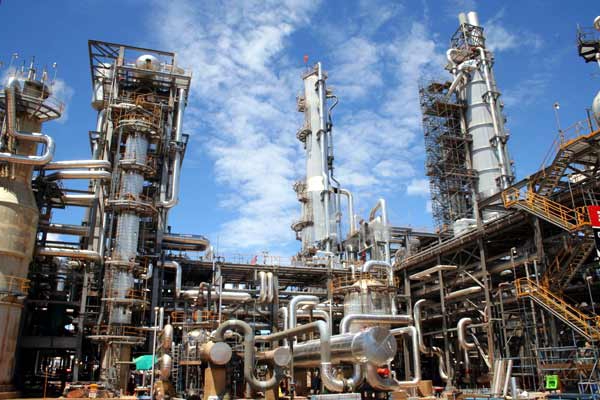
Mittash tested a huge number of mixtures as catalysts (about 20 thousand), until he settled on Swedish magnetite, which has the same composition as the catalysts that are actively used today. Modern catalysts are steel promoted with a small amount of alumina and potassium.
Back in Soviet times, enormous work was carried out in research institutes and laboratories at factories in the field of studies of the kinetics and thermodynamics of ammonia synthesis. A significant contribution to the improvement of the technology of ammonia production was made by engineers of nitrogen fertilizer plants and innovative workers. As a result of these works, the entire technological process was substantially intensified, completely new designs of specialized apparatuses were created, the construction of ammonia production began.
The Soviet ammonia production system was characterized by sufficient efficiency and high productivity.
The first practical application confirming the success of the proposed theory was the development of such an important process of chemical technology as the synthesis of ammonia.
One of the types of sufficiently effective ways to improve the production of ammonia is the utilization of purge gases. Modern plants emit ammonia from such gases by freezing.
Purge gases after ammonia can be used as low-calorie fuel. Sometimes they are simply thrown into the atmosphere. Combustion gases must be sent to a tube furnace (methane conversion department). This saves the consumption of raw materials (natural gas).
There is another way to utilize these gases. This is a separation of their methods of deep cooling. This method will reduce the total cost of finished products (ammonia). Also, the argon obtained in this process is much cheaper than its analogue, but recoverable in an air separation unit.
The purge gases have a high inert content, which contribute to a less intense reaction.
Ammonia Production Scheme
For a detailed study of ammonia manufacturing technology, it is necessary to consider the process of ammonia evolution from such simple substances as hydrogen and nitrogen. Returning to chemistry at the school level, it can be noted that this reaction is characterized by reversibility and a decrease in volume.
Since this reaction is exothermic, a decrease in temperature will contribute to a shift in equilibrium in favor of the release of ammonia. However, in this case, there is a significant decrease in the rate of the chemical reaction itself. That is why the synthesis is carried out in the presence of a catalyst and withstanding a temperature of about 550 degrees.
The main methods for the production of ammonia
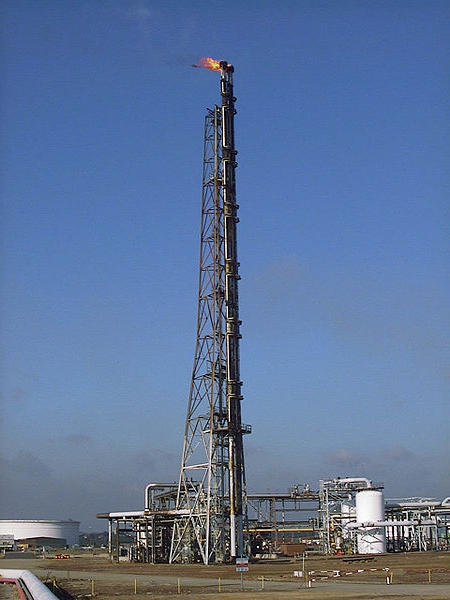
The following production methods are known from practice:
- at low pressure (about 15 MPa);
- at medium pressure (about 30 MPa) - the most common method;
- at high pressure (about 100 MPa).
Impurities such as hydrogen sulfide, water and carbon monoxide negatively affect ammonia synthesis. So that they do not reduce the activity of the catalyst, the nitrogen-hydrogen mixture must be thoroughly cleaned. However, even under these conditions, only part of the mixture will turn into ammonia in the future.
Thus, we consider in more detail the process of ammonia production.
Production technology
The ammonia production scheme involves flushing natural gas using liquid nitrogen. In this case, it is necessary to carry out the conversion of gas at high temperature, pressure up to 30 atmospheres and a temperature of about 1350 degrees. Only in this case, the converted dry gas will have low consumption rates for oxygen and natural gas.
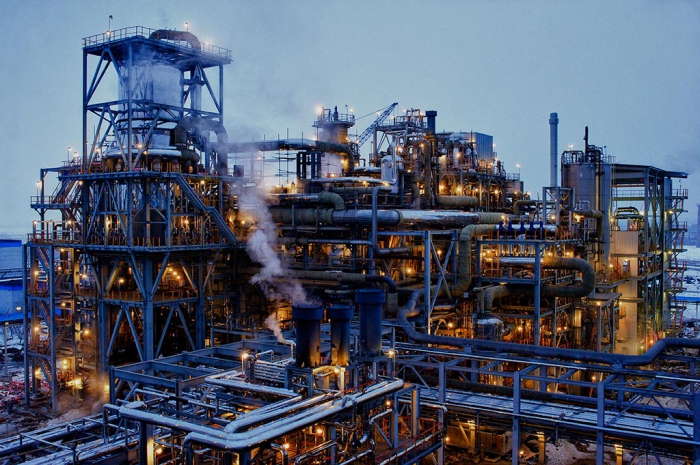 Until recently, the production of ammonia, the technology of which contained both serial and parallel connections between the devices used, was based on duplication of the functions of the main equipment. The result of this organization of the production process was a significant stretching of technological communications.
Until recently, the production of ammonia, the technology of which contained both serial and parallel connections between the devices used, was based on duplication of the functions of the main equipment. The result of this organization of the production process was a significant stretching of technological communications.
There is a modern production of ammonia, the technology of which already envisages the use of a plant with a capacity of 1360 tons per day. This equipment includes at least ten devices for conversion, synthesis and purification. Serial-parallel technologies form independent units (workshops), which are responsible for the implementation of individual stages of processing of raw materials. Thus, the organized production of ammonia can significantly improve working conditions at specialized plants, carry out automation, which will lead to stabilization of the entire technological process. These improvements will also lead to a significant simplification of the overall technology for the production of synthetic ammonia.
Innovations in ammonia manufacturing technology
Modern ammonia production in industry uses a cheaper type of natural gas as a raw material. This significantly reduces the cost of the finished product. In addition, thanks to such an organization, working conditions at the respective plants can be improved, and the chemical production of ammonia can be greatly simplified.
Features of the production process
For the subsequent improvement of the production process, it is necessary to free the mechanisms for cleaning gases from harmful and unnecessary impurities. For this, the fine purification method (adsorption and precatalysis) is used.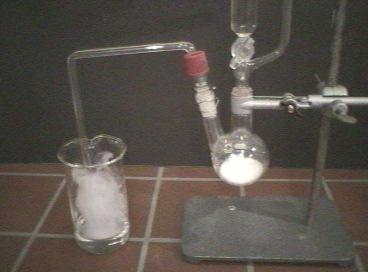
This is the case when the production of ammonia does not involve washing the gas using liquid nitrogen, but at the same time there is a low-temperature conversion of carbon monoxide. For the conversion of natural gas at high temperature, oxygen-enriched air can be used. In this case, it is necessary to ensure that the methane concentration in the converted gas does not exceed 0.5%. This is due to the high temperature (about 1400 degrees), increasing during a chemical reaction. Therefore, as a result of this type of production, a high concentration of inert gas can be traced in the initial mixture and its consumption is 4.6% higher than the same consumption during oxygen conversion at a concentration of 95%. At the same time, oxygen consumption is 17% lower.
Technological gas production
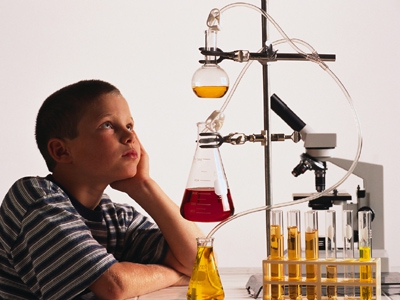
This production is the initial stage in the synthesis of ammonia and is carried out under a pressure of about 30 at. To do this, natural gas is compressed using a compressor up to 40 atm, then it is heated to 400 degrees in a coil, which is located in a tubular furnace, and is supplied to the desulfurization compartment.
If sulfur is present in an amount of 1 mg in m in purified natural gas, it must be mixed with water vapor in an appropriate ratio (4: 1).
Hydrogen react with carbon monoxide (the so-calledmethanation) occurs with the release of a huge amount of heat and a significant decrease in volume.
Copper production
It is carried out if the production of ammonia does not include washing with liquid nitrogen. In this process, copper-ammonia treatment is used. In this case, such ammonia production is used, the technological scheme of which uses oxygen enriched air. At the same time, specialists should ensure that the methane concentration in the converted gas does not exceed 0.5%, such an indicator is directly related to an increase in temperature to 1400 degrees during the reaction.
The main directions of development of ammonia production
Firstly, in the near future it is necessary to cooperate in the organic and nitrogen industries, which should be based on the use of such raw materials as natural gas or oil refining.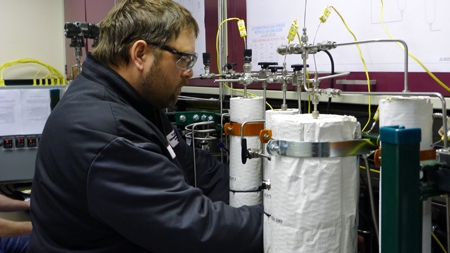
Secondly, there should be a gradual enlargement of all production and its individual components.
Thirdly, at the present stage of development of the chemical industry, research is needed to develop active catalytic systems to achieve maximum pressure reduction in the production process.
Fourth, the use of special columns for the synthesis using a fluidized bed catalyst should come into practice.
Fifth, in order to increase production efficiency, it is necessary to improve the operation of heat utilization systems.
Conclusion
Ammonia is of great importance for the chemical industry and agriculture. It serves as a raw material in the production of nitric acid, its salts, as well as ammonium salts and various nitrogen fertilizers.
